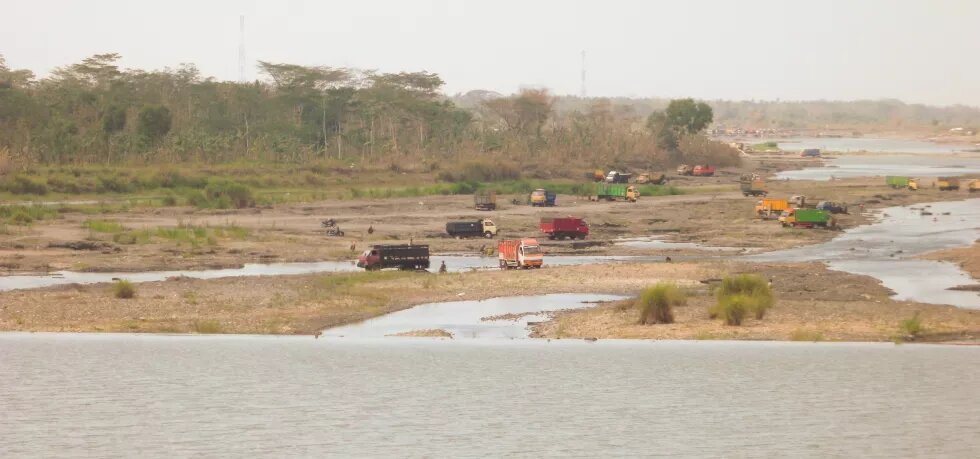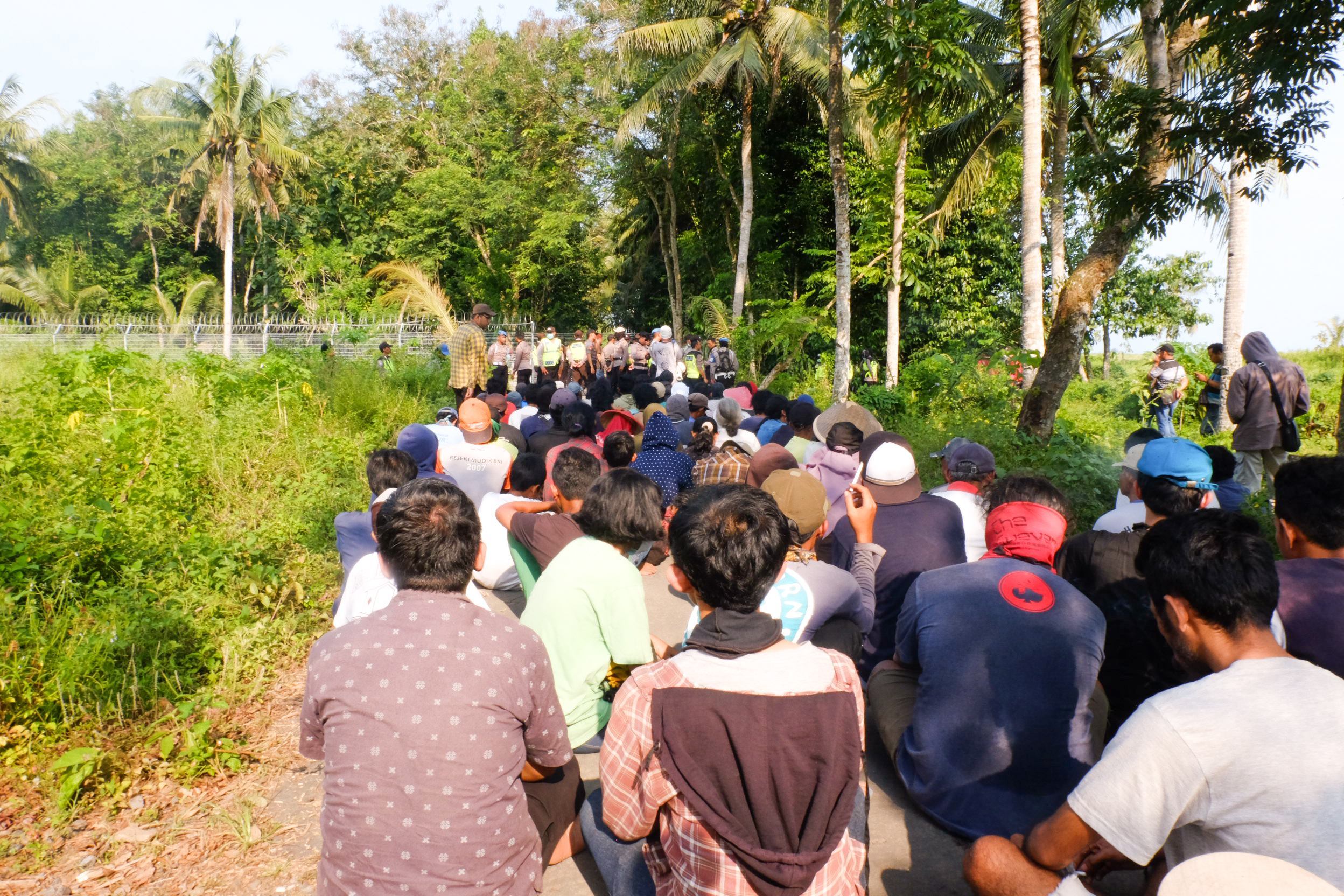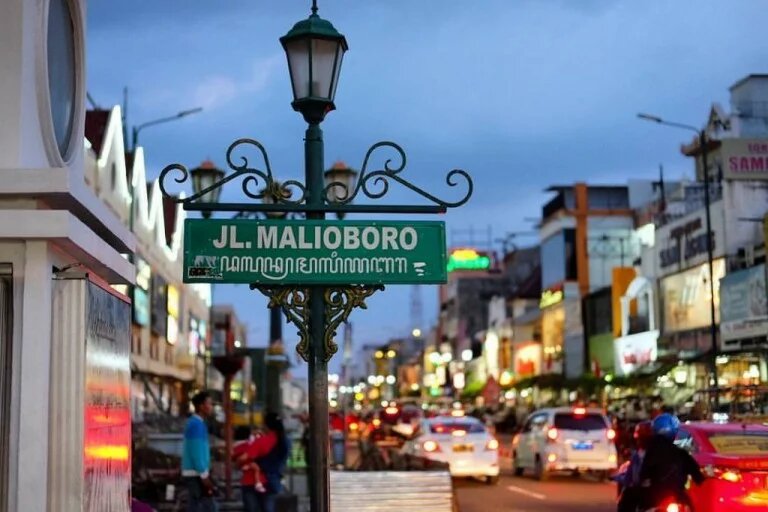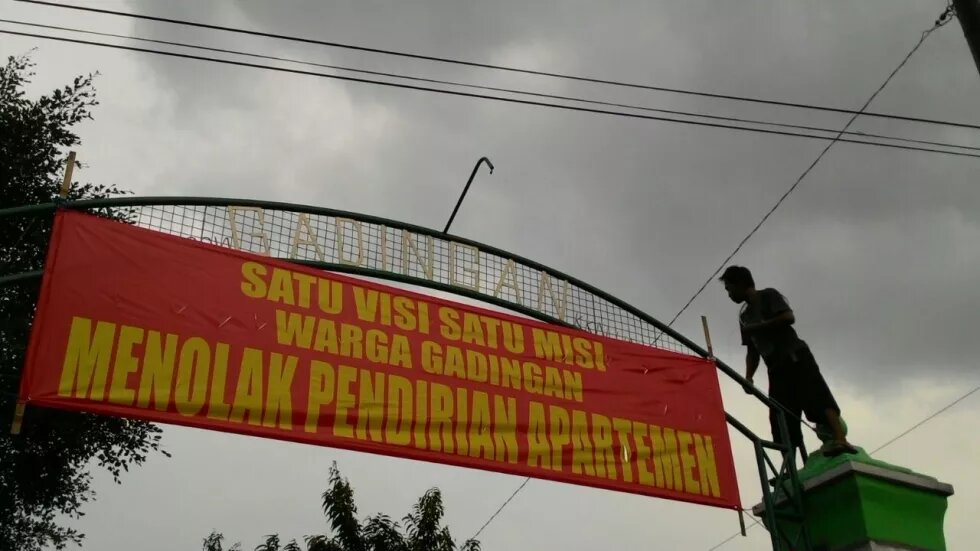
The Special Region of Yogyakarta has a fairly diverse regional character, divided into volcanic areas, urban, coastal, karst and incised with cluster of hills reaching to Central Java Province. The diversity of this region became the basis of government policy of the Special Region of Yogyakarta which places tourism as one of the regional development missions in the last ten years. This article tries to analyze the social and environment impact of this expansion.

Environmental and social impacts do not only occur on development sites where construction projects are being done to meet the demands of tourism industry and supporting infrastructure. The impacts also occur in the location of exploitation of natural resources to supply raw materials for on-going development projects such as the exploitation of ground water, energy supply that relies on dirty coal energy, and sand exploitation in the area of Mount Merapi and the Progo River.
The government as a regulator is clearly taking side with the investors. It can be seen from the ease of regulatory changes that are considered to hinder large-scale development projects. Regulatory changes that have an impact on environmental conditions include Government Regulation number 26 of 2008 (PP No. 26 Tahun 2008) concerning national spatial planning, which was amended by Government Regulation number 13 of 2017 (PP No. 13 Tahun 2017). These changes include removing disaster-prone areas into geological protected areas, which was then followed by construction policy located in disaster-prone areas. One of them is the construction of the new airport, Yogyakarta International Airport (YIA) in Kulon Progo Regency, Yogyakarta. By placing constructions project in high risk disaster-prone areas, this will lead to an increased risks to be faced in the future.
Large-scale development and natural resources exploitation to support tourism sector in Yogyakarta triggered a real impact in an increase and widespread of pollution and environmental damage as well as social conflicts that occured. This is a contradiction to the mandate of the 1945 Constitution Article 28H verse 1 (UUD 1945 Pasal 28 H Ayat 1) which states that "Every person shall have the right to live in physical and spiritual prosperity, to have a home and to enjoy a good and healthy environment, and shall have the right to obtain medical care". Therefore the state should guarantee the right to a good and healthy environment which is a part of human rights.
But in fact, the deprivation of living space and the source of people's livelihoods continues to occur and even increased, this proves that the right to the environment is far from expectations. Deprivation of living space and sources of livelihood is not only done by the government in implementing development, but it involves corporations which are supported by law enforcers in the name of securing the country's strategic assets. Deprivation of living space and sources of livelihood is also often done by criminalizing the people who struggle defending their living space, eventhough in the Law number 32 of 2009 (UU No. 32 Tahun 2009) on Environmental Protection and Management Article 66 states that "Everybody struggling for a right to proper and healthy environment may not be charged with criminal or civil offense"
Tourism Expansion and Construction Moratorium
The expansion of the tourism industry in particular, hotels construction as one of tourism drive continues to increase. Since 2009, the development of hotels construction has massively increased, social conflicts have begun to emerge in several regions, particularly in Yogyakarta City and Sleman Regency. Conflict and people's resistance are based on concerns on the impact that they will face, especially on ground water as a source of clean water for the people.
Conflict and resistance of the people in putting pressure on the government of Yogyakarta City to issue a moratorium on hotel construction was succesful with the issuance of the Mayor Regulation number 77 of 2013 (PERWALI No. 77 Tahun 2013) on Control of Hotel Construction. The hotel construction moratorium policy is valid for three years starting from January 1, 2014 - December 2016, unfortunately the moratorium could not control the number of applications for hotel construction plans due to the reason of the moratorium policy was informed to the public as of November 22, 2013. So that in the gap period before the implementation there were 104 applications for hotel permits that have been processed by the government Yogyakarta City so that potential for social conflicts occured.
Moratorium on hotel development in the city of Yogyakarta through the regulation of the mayor of Yogyakarta is a half-hearted or even non-functioning policy to control the massive hotels construction. In addition that there was gap time for filing permit application the law in force, the term of the moratorium is valid for a short period of 3 years, then could be extended every year. At the end of 2018, there was an exception for the construction of 4-star and 5-star hotels which was regulated by the Mayor Regulation number 58 of 2018 (PERWALI No. 58 Tahun 2013) on Control of Hotel Construction.
Beside Yogyakarta City, the massive expansion of tourism industry in Yogyakarta Province also reached Sleman Regency with development model of condotels and apartments. These plans and construction projects in Sleman Regency received responses from affected people. There are increasing conflicts and resistance along with raising number of permitted construction projects even when there people have clearly rejected the projects.
The ongoing conflict and people's resistance to the projects generated a response from the Regional Government of Sleman Regency, with the issuance of the Sleman Regent Regulation number 63 of 2015 (PERBUP Sleman No. 63 Tahun 2015) concerning the Termination of the Establishment of Hotels, Apartments and Condotels in the Sleman Regency. This regulation is valid for five years and was signed in November 2015 with validity until 31 December 2021. Although this development project moratorium policy completely regulates all types of large-scale development and the construction of non - 3 star hotels in the upstream districts as a water infill region in the Sleman - Yogyakarta Groundwater Basin .
The development moratorium policy in Sleman Regency specifically regulates three districts in this upstream region, namely Turi District, Pakem District and Cangkringan District. This is an anticipatory measure to massive development project, as this region is considered as a water recharge zone area as well as a protected area for the sustainability of Sleman – Yogyakarta Groundwater Basin (Cekungan Air Tanah/CAT Sleman - Yogyakarta) .
However, this policy was considered too late to anticipate massive development plans in all districts of Sleman Regency, because there were already enough development permits that had been processed and were not included in the moratorium arrangement, so there were still many conflicts that occurred at the development site level.
Tourism and Infrastructure Support
2004 was the starting point on the agreement for construction of the Southern Cross Roads (Jalan jalur Lintas Selatan / JJLS) by five Governors and became a national political decision, even though the development plan had been planned since 2002. JJLS was built with the main goal of prospering the people on the southern coast of Java by opening accessibility through road infrastructure, such as the Northern Coast Line of Java (Jalur Pantai Utara / PANTURA) . However, PANTURA - which becomes a point of reference for development projects of the government - leaves tremendous environmental damages, so the potential for environmental damages will occur on the Southern Coast of Java. In the Special Region of Yogyakarta, JJLS will cross Kulon Progo Regency, Bantul Regency and Gunungkidul Regency, which will pass through the karst area which is a geological protected area.
Behind the welfare-discourse that underlies the development of JJLS, the actual design created is to provide accessibility to extractive industries and tourism industry, to facilitate capital inflows that will enter the South Coast of Java, particularly on the coast of the Special Region of Yogyakarta. Gunungkidul Regency itself is one of the regions with a fairly complete or a prime tourist destination, ranging from natural panoramas, coastal tourism and cave panoramas as a special tourist destination in the Gunung Sewu karst area.
Gunung Sewu karst area is one of the essential areas designated as geological protected areas through the Minister of Energy and Mineral Resources Decree number 3045 K / 40 / MEM / 2014 and designated as geopark by UNESCO in 2015 as a result of a decision at the 4th Asia-Pacific Geoparks Network Symposium in San'in Kaigan Geopark, Japan. The Gunung sewu Karst landscape is currently experiencing damage due to the exploitation of the rampant limestone quarries and the expansion of the tourism industry with the massive development of hotels, villas, resorts which have changed the karst landscape. In the coastal region, the people's economy which was built and developed independently in managing coastal tourism destinations, also began to experience threats due to massive investment in the southern coastal region of Gunungkidul Regency.
Another Infrastructure project which is national strategic project built in the Special Region of Yogyakarta is a new airport in Kulon Progo Regency. Yogyakarta International Airport (YIA) is one of the national strategic projects regulated through Presidential Regulation number 3 of 2016 concerning the acceleration of the implementation of national strategic projects and then updated through Presidential Regulation number 58 of 2017.
The new airport in Kulonprogo is designed with the concept of an airport city, is an ambitious project for both the central and the regional governments, because in Yogyakarta spatial planning, it only regulates the development of Adi Sucipto Airport, Sleman Regency and to integrate it with Adi Sumarmo Airport in Solo, Central Java Province. The new airport should not have been built in that location, because in the disaster study it is situated in a high-risk disaster-prone area.

It is clear that Yogyakarta International Airport (YIA) functions to serve as a supporting infrastructure for tourism in Yogyakarta however it has usurped the living space and sources of people's livelihoods, both settlements and agricultural land that are proven to be able to support the people's economy in the distribution chain of agricultural products to consumers. The new airport area is also a place for migratory birds to stop, so it will also disrupt the ecosystem there. One of the feed supplies for migratory birds that stop in the area as an agricultural area which has turned into an airport area and even will be extended to become an airport city.
Other national strategic projects are the construction of airport railroad tracks, the construction of the Yogyakarta - Bawen toll road (71 Km), the Yogyakarta - Solo toll road (40.5 Km) and the acceleration of transportation, electricity and clean water infrastructure for ten national tourism strategic areas, one of which is the Borobudur temple area in Magelang, Central Java, which will be linked to Yogyakarta and the new airport through an incised construction method which will cut-cross the incised hill areas which according to a disaster study, this incised area is prone to landslides.
Environmental Crisis and Ecological Disasters
The massive development in Yogyakarta to support tourism infrastructure has the consequence of decreasing the quality of the environment resulting in an environmental crisis and even causing ecological disasters. The environmental aspects that have been affected are decreasing air quality due to increased pollutants from motorized vehicles, traffic congestion due to the high number of motorized vehicles in Yogyakarta, rising number of mining projects on the Slopes of Mount Merapi as an upstream area disrupts the recharge area as a groundwater refill area in Sleman - Yogyakarta Groundwater Basin (CAT), and high groundwater utilization in urban areas, causing a decrease in ground water supply level and affecting people's access people in the difficulty of getting clean water. Not to mention the problem of illegal use of ground water by business activities in Yogyakarta.
Tourism activities also have implications for the increased production of waste produced as well as liquid waste which partly enters rivers and empties into the sea, causing pollution of river water quality. According to the 2018 Data of Special Region Yogyakarta's Office of Forestry and Environment, it shows that the waste that can be transported to Piyungan Final Disposal Site (TPA) is only 50.82%, which comes from three areas, namely the Yogyakarta City, Sleman Regency and Bantul Regency, and unmanaged waste is 49.18% and some goes into rivers and empties into the sea. Therefore, in certain seasons, garbage appears on the beach which disturbes the coastal tourism destination points. Waste that has been managed and entered the Piyungan Landfill has an average of 552.25 tonnes / day and ironically the condition of the current landfill site has experienced over capacity due to the inconsistency of the management system. It was planned to use sanitary landfill system but in fact, it is an open dumping.
The Gunung Sewu Karst area as a geological protected area as mandated by Law No. 26 of 2007 on landscape and spatial planning, is increasingly damaged due to the massive limestone mining activities and road construction that cut down karst banks. There are plans to build one hotel in the coastal area of Gunungkidul. in fact it is doing karst hill destruction and there is an indication that it will privatize the coast by installing a gate to the Seruni coastal area which should be a public space. If the construction of a hotel in the coastal area of Seruni is legalized by the government, it will be a trigger effect for development in other regions in the Gunung Sewu karst area.
The increasing number of karst hills damaged and even depleted, the threat of flooding in the rainy season as happened in November 2017 and 2018 some underground caves and rivers so that water cannot be accommodated by underground river networks so that it overflows into the mouth of the cave. Conversely, in the dry season the underground river discharge in the future will decrease because the porosity function of the hill continues to decrease.
People's Collective Work towards Ecological Justice
The people's response to the massive development in Yogyakarta is very diverse, the diversity of these responses forms the basis of groups of people who fight against development plans in their region, to create a forum for networking and build collective work. The role of individuals and groups in conducting collective work is adjusted to each capacity and ability.
People's collective work is part of a shared agenda to urge the government to ensure justice for the environment as part of creating ecological justice as a constitutional justice. The shared agendas include: 1) building and strengthening people's organizations, 2) building people's economy to match the current form of economy which is only monopolized by investors. 3) Thirdly, raising wider support from the public in order to provide strong pressure points towards the government, 4) seizing space and political momentum from the local to national level to be able to influence policy so that the products of the policies produced are pro-environment and the people.
In seizing space and political momentum, an environmental political agenda is needed as part of the realization of ecological justice. There are 6 environmental political agendas as a collective work: 1) Ensure that the state becomes a stronghold of human rights, 2) ensure the people as the main actors, 3) restore and protect environmental functions, 4) urge the state to recognize and protect people's managed areas, 5) urge the state to resolve conflicts over natural resources and the environment, 6) to encourage the state to give recognition and protection to women in natural resources management .
The Six Environmental Political Agenda is a way to realize ecological justice so that sustainable development ensures the environment as the core of the life of the country and nation. The distribution of natural resource management through people participation, so that political governance, management, production and consumption with the people as the main actor, to maintain a social and cultural base which is a part of the Indonesian civilization.



